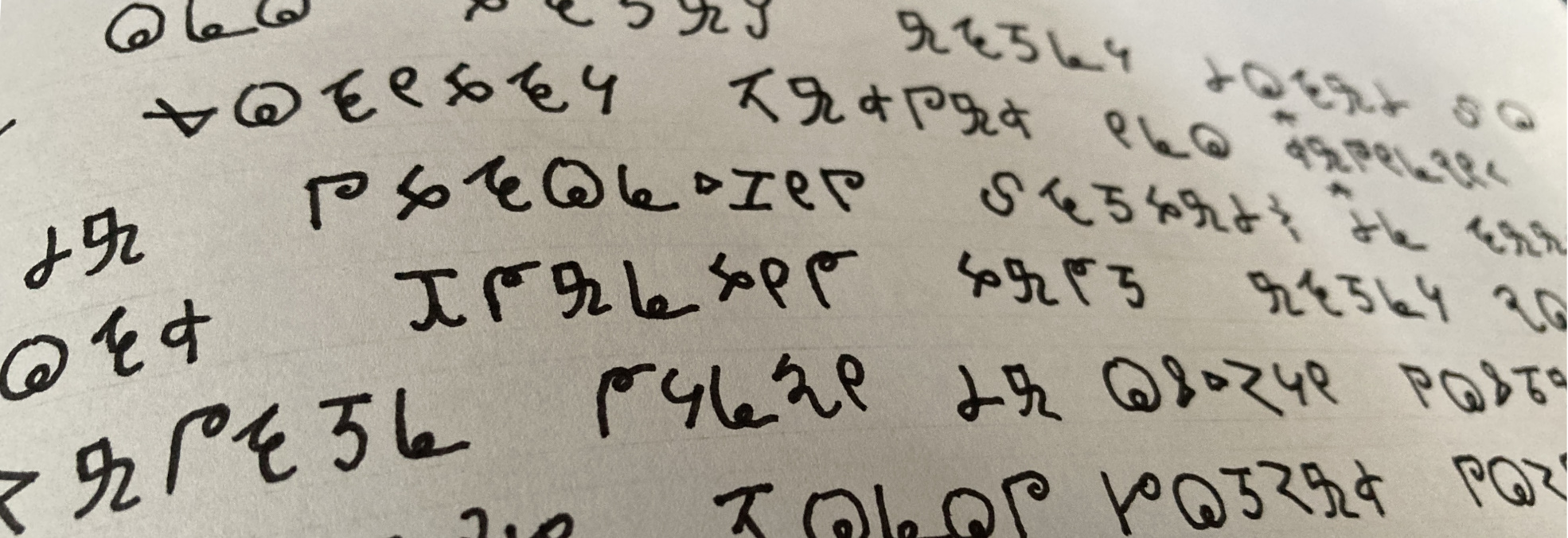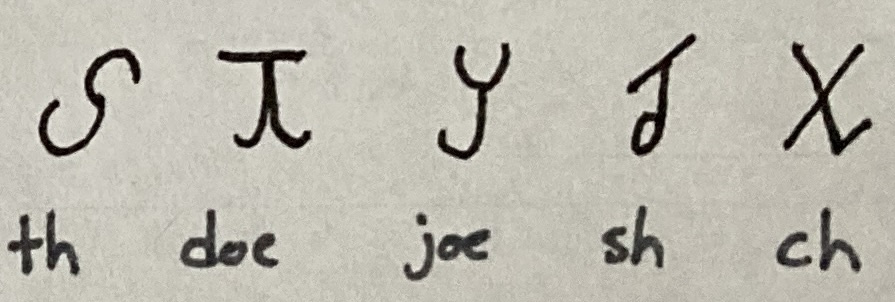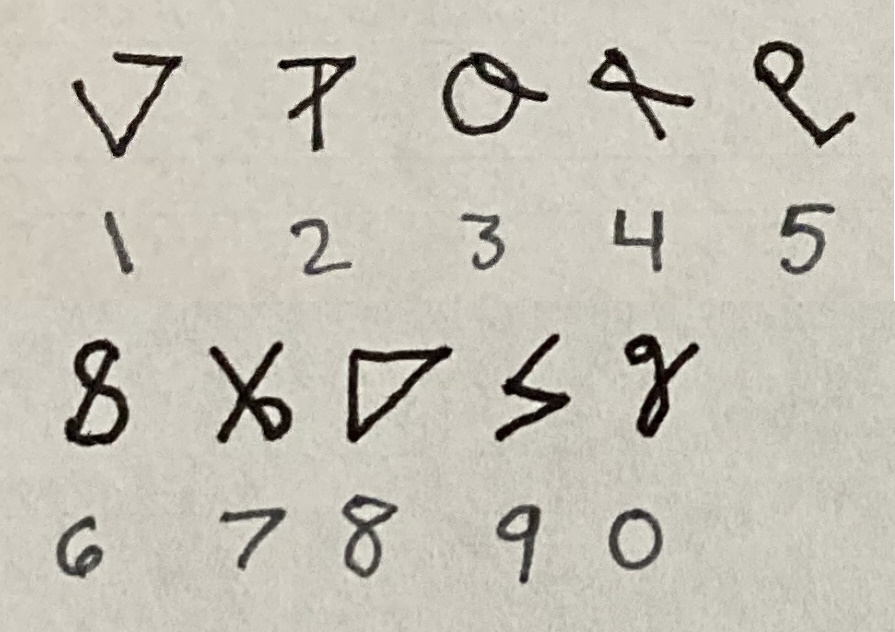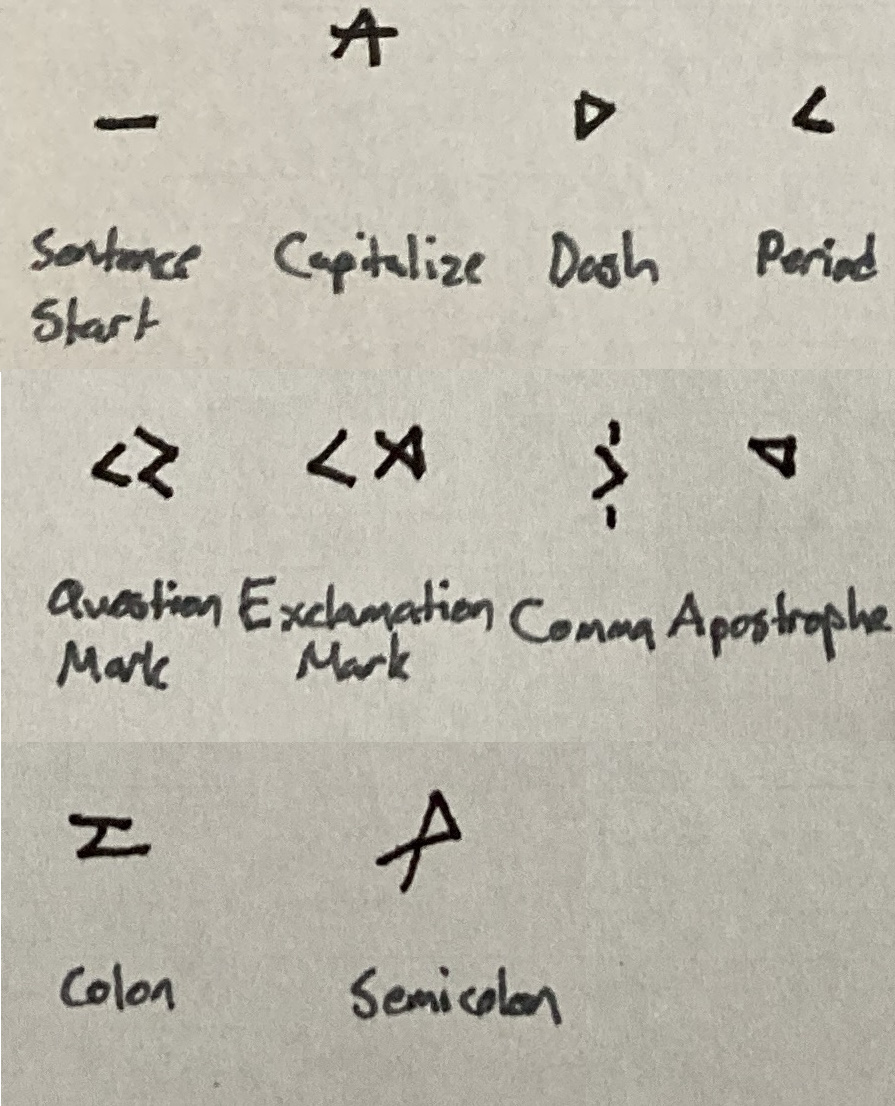Overview
Also known as Eegiso by non-dragons, Draconian is a language developed thousands of years ago by the dragons and nearly universally used by
Laku. It has completely replaced its predecessor,
Wyrmic. Dragons of note convene to reform the language every few centuries to closely match it to the styles of commonly used languages throughout the world. In its current iteration, Draconian closely mirrors western European languages in sentence structure and in its alphabet, with a focus on English as this language has become one to the most widely used human languages world wide.
Characteristics
Draconian is a rather simple language considering it is many thousands of years old, predating the
Joining. Thirty one letters make up its alphabet, which functions much like the Latin alphabet of the humans. No difficult or strict rules exist that must be followed for one to be understood, though rules do exist. Sentences are generally structured similar to how western European languages structure their sentences, though many sentences can be rearranged and still have a similar meaning. Draconian utilizes a fewer verb tenses than many other languages, and due to reformations, any irregularities in verb conjugations get remedied. There exists only one present tense, one past tense, and one future tense. Draconian also has an imperative tense and every verb has an infinitive form. Modal verbs also exist which are used with infinitives.
Reformations
The intent with Draconian in the beginning was to have a simple language dragons, and to a lesser degree all Laku, could learn without much issue. Dragons and some Lakis species have the ability to travel to far off lands and having a unified language that varies little over that distance would be an advantage. They knew that occasionally the language would need reevaluation; new discoveries and changing sayings, among other dynamic components of language, would cause Draconian to shift and diverge.
However, when dragons and other Laku removed themselves from human awareness, many found themselves blending in and adopting human customs, including their methods of communication. When humans began to routinely speak in organized languages, dragons found that Draconian began to vary across distant regions faster than ever, spurring the need for regular reformations. The
Greatest Elder at the time, Sorhalar-kal, ordered reformations to occur every two to three centuries at most, and earlier if
Elders across the world felt it was needed.
Writing System
The Draconian alphabet has a letter that corresponds to each non-accented letter in the Latin alphabet, plus five more letters as remnants from past Draconian alphabets. Unlike with the diction and syntax of Draconian, the design of its letters do not have any basis in any human or Lakis system. Instead, Draconian letters are loosely based off of the naming alphabet used when dragons spoke Wyrmic; the prior language had no system for which names could be written and a separate system, based on sounds rather than on words and concepts, was developed to supplement it. In time, some of these original letters have been lost, as forty originally existed. Draconian's alphabet had at one time seventy two letters, and a mix of the added letters and the original letters survived though the centuries, ultimately being pared down to the thirty one letters of today.
It is not unusual for those who learn Draconian as a second language to omit use of thr extra five letters if that individual speaks a Western European language as their primary language. Fluent Draconian readers can easily understand the alternate spellings, though the new learners are encouraged to learn how and when to use the other letters.
Draconian has become a melting pot of many different influences from everywhere in the world due to its periodic reformations and long history. As such, it contains a wide collection of sounds, perhaps more than what can be found in any human language or other language specific to a particular Lakis species. However, it is often described has having a harsher theme than most any language, no matter if it is being compared to a human language or any of the remaining native languages of the Laku. Learning how to pronounce words correctly is perhaps one of the biggest challenges to anyone learning Draconian. The longer the language goes without a reformation, the more dialects that emerge causing dragons from different parts of the world to pronounce Draconian differently.
Draconian syntax resembles that of western European languages, as the most recent reform, and the one prior, targeted this group as reference. However, due to Draconian's variability through time, there are no hard rules as to how one structures their sentences. Subject-verb-object is the typical order for structuring sentences in most cases. Dragons and Laku from regions where humans do not speak European languages might use different syntax. However, it is generally easy to understand what a dragon from a different region is saying because there is only a little variability.
Draconian verbs use few tenses: past, present, future, and imperative. No irregularities exist in conjugations, so it is a simple matter of following set rules in order to use the correct verb. Endings for verbs depend on the subject of the verb, the tense, and the ending of the verb's infinitive form.
While there are no irregular verbs in Draconian, modal verbs, also called helping verbs or auxiliary verbs, cannot be conjugated like other verbs can and thus have only one form. These verbs also do not have the same endings as other verbs.
There are six categories of subject: first person singular (I), second person singular (you), third person singular (he/she/it), first person plural (we), second person plural ("you all"), and third person plural (they).
There are five verb endings: -ad, -at, -yr, -jo, and -re.
- ex: petayr (to take) = peta -yr devire (to look) = devi -re
Taking off the ending of a verb gives the root of the verb, which is used to form all but the future tense.
- ex: kedowat (to do) = kedow- baire (to be) = bai-
The present tense if formed in the following way:
| I |
-ae |
we |
-aed |
| you |
-ar |
you(pl) |
-asr |
| s/he, it |
-ad |
they |
-aed |
| I |
-as |
we |
-alt |
| you |
-a |
you(pl) |
-asr |
| s/he, it |
-at |
they |
-ast |
| I |
-ys |
we |
-yer |
| you |
-ys |
you(pl) |
-yes |
| s/he, it |
-yr |
they |
-ysr |
| I |
-je |
we |
-jor |
| you |
-jn |
you(pl) |
-jon |
| s/he, it |
-jo |
they |
-jer |
| I |
-r |
we |
-ral |
| you |
-ra |
you(pl) |
-rae |
| s/he, it |
-re |
they |
-rel |
The past tense is formed using the present form of the verb "to be" (baire) that matches the subject plus the past participle of the verb. The past participle is formed by joining the root with the following endings based on the infinitive's verb ending:
- -ad = -a
- -at = -alr
- -yr = -yre
- -jo = -ja
- -re = ra
The future tense is formed by combining the infinitive form with the respective ending based on the infinitive's ending and the subject. It is formed as follows:
|
-yr |
-re |
-ad, -at, -jo |
| I |
-en |
-n |
-ren |
| you |
-es |
-s |
-res |
| s/he, it |
-en |
-n |
-res |
| we |
-eon |
-on |
-reon |
| you (pl) |
-eos |
-os |
-reos |
| they |
-eon |
-on |
-reon |
The imperative form is formed by the root of the verb. No endings are added and there is no subject agreement needed.
Adjectives follow nouns in all cases.
The plural form of a noun is formed by adding -s to the end of the word if it ends with a vowel, and -is if it ends with a consonant.
Draconian's writing system has corresponding glyphs for many Latin alphabet characters, including all letters and much of its common punctuation. However, Draconian does not have an equivalent for all punctuation and in these cases, the Latin alphabet version is used. Examples with no Draconian version include mathematical symbols (+,-,=,÷), brackets ([,],{,}), slashes and some other obscure characters (/,\,*,$,|,,~).
Draconian uses a base ten number system and has done so for the entirety of its existence. Numbers spelled out and spoken in Draconian follow basic rules, though for larger numbers this system is impractical. Numbers are written as each digit spelled out, and for numbers over nine, the last digit that is spelled out has the last letter removed. Examples include:
- 10: opkzw (1=opk, 0=zwa, a is removed)
- 25: tujqu (2=tuj, 5=quk, k is removed)
- 349: albtilno (3=alb, 4= til, 9=noc, c is removed)
- 1007: opkzwazwada (1=opk, 0=zwa, repeated twice, 7= dao, o is removed)
- 900,682: noczwazwasotehotu (9=noc, 0=zwa, repeated twice, 6=sot, 8=eho, 2=tuj, j is removed)
Though this system of writing out each digit leads to long strings for large numbers, there has been resistance every time an Elder advocates for a different set of rules. These rules allow for no irregularities and are simple to learn, which is the goal of the language. In writing, it is acceptable and commonplace to use digits for any number over ninety-nine. Spoken, it is not unusual for the omitted letter at the end of a number to be pronounced. Most speakers pause after every three digits when saying large numbers.
Sample Pronounciations for Draconian Encountered Within the Books
- Dogantig Sopbaki (Conjuring Dragon) -> DOH-gan-tig SOHP-ba-kee
- Sopbat (Conjurer) -> SOHP-bat
- Dogantig Sperisar (Spiritual Dragon) -> DOH-gan-tig SPIHR-uh-ZAR
- Dogantig le Xhonam (Dragon of Fortune) -> DOH-gan-tig LEE ZHAH-nam
- Dogantig Nalow (Swift Dragon) -> DOH-gan-tig nah-LOH
- Dogantig le P-gont (Dragon of Strength) -> DOH-gan-tig LEE PEE-gont
- Ilistacol (object on spirit dragons' bodies to channel magic) -> ILL-ist-ah-KOHL













Comments
Author's Notes
The Draconian text from the header is a translation of the very end of chapter 35 of book one, Rise of the Darkness. In the Latin alphabet the text would appear as follows: Dn ono truajo arune dorad tho psash moritre fahsah ino Hasenji. Cho da stron-xis thrutad, Dn raahr tu lorh dogantig tagu arune jorafre, op talayrun genci da op-lei sopbat ino opkzwazwazwazw fonos woulah solyre. In English, the passage is this: No longer will I rely on others to get around in Hasenji. As the buildings approach, I roar to any dragon who will listen, an announcement that the first conjurer in ten thousand years can fly.